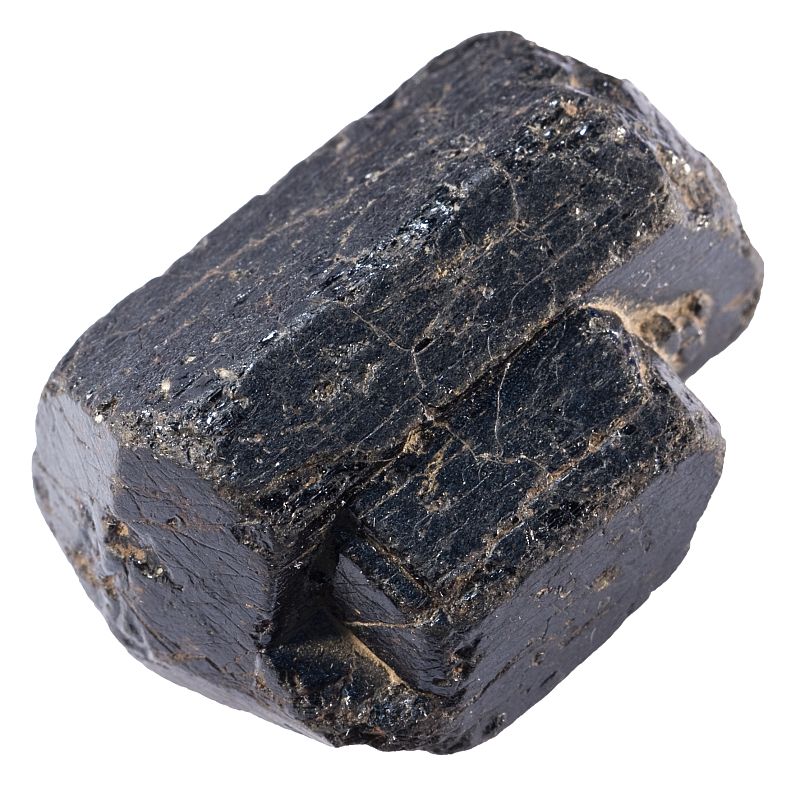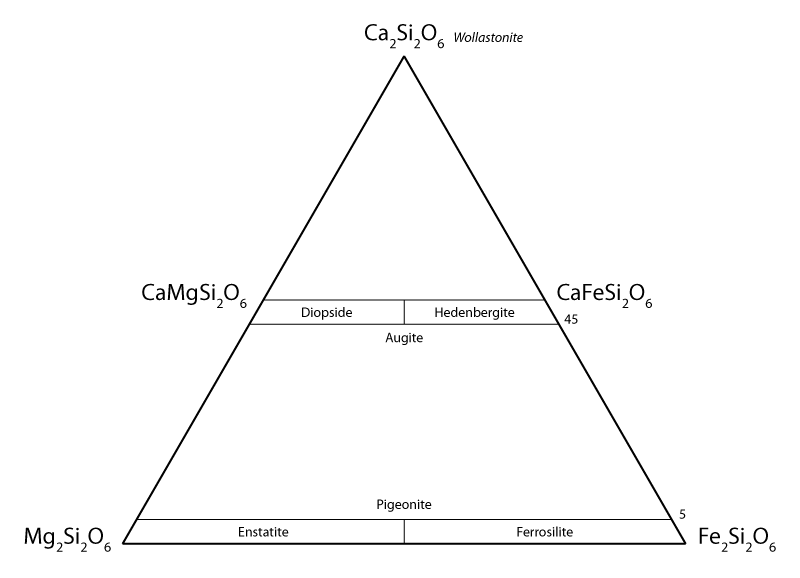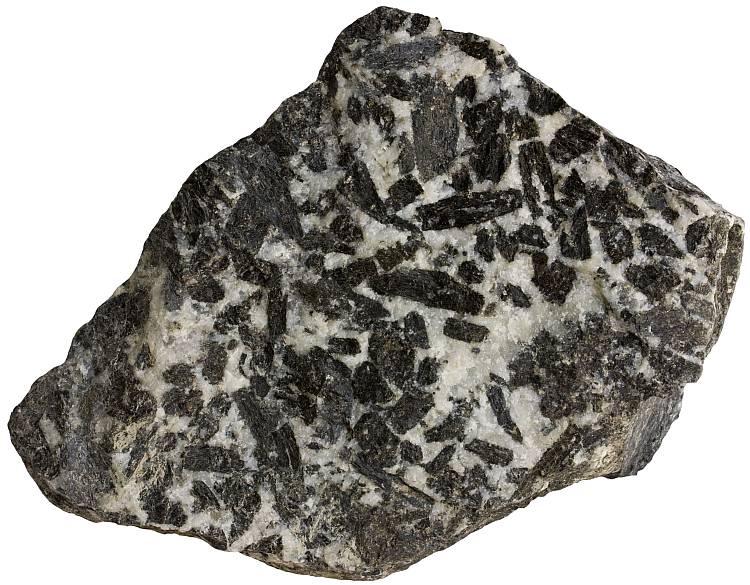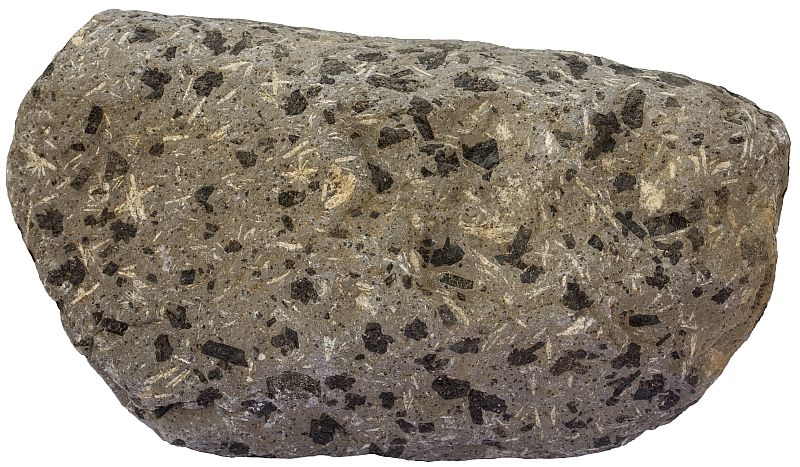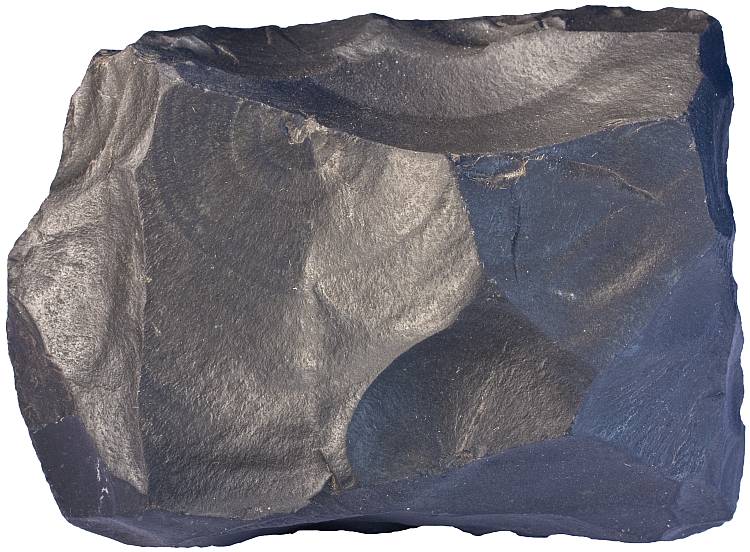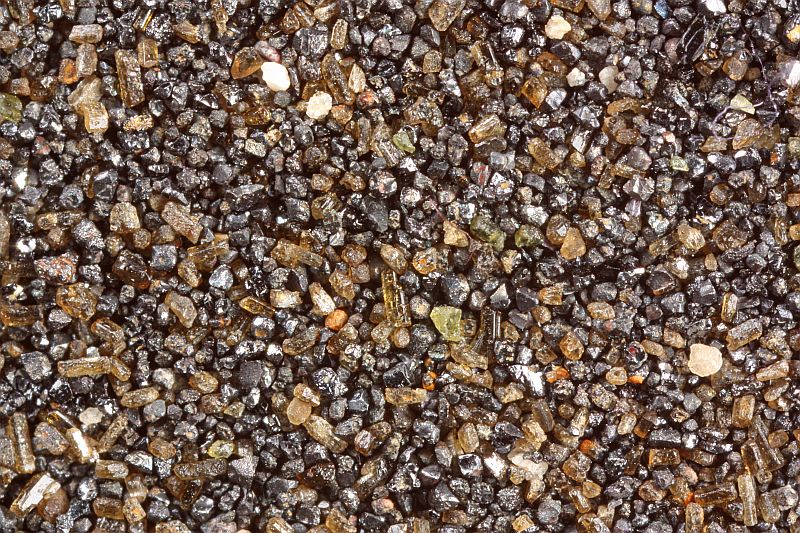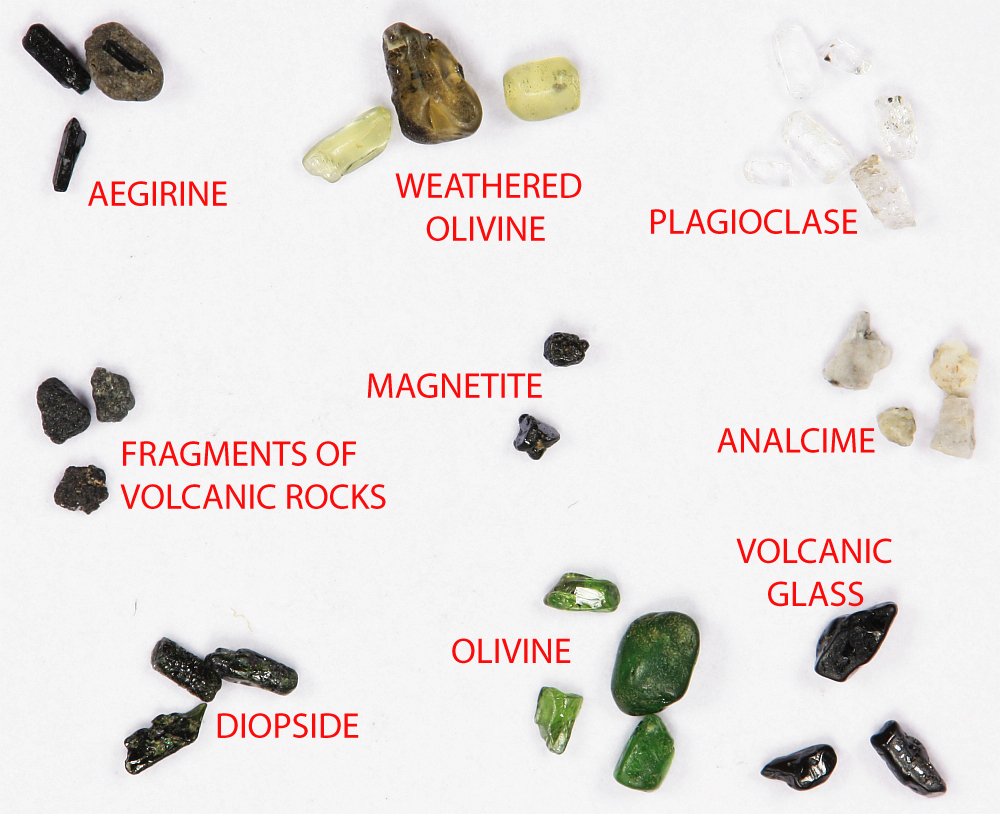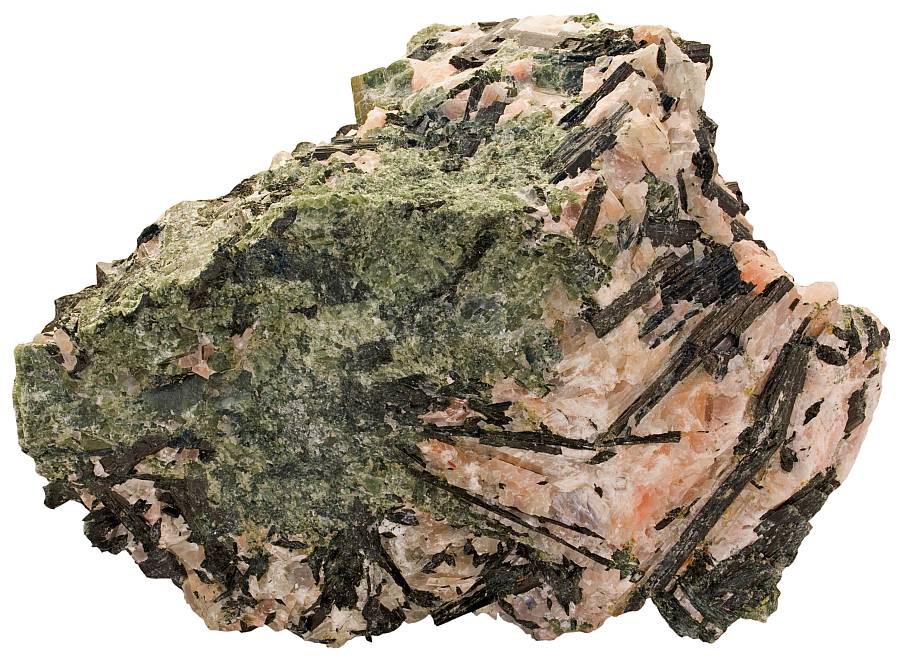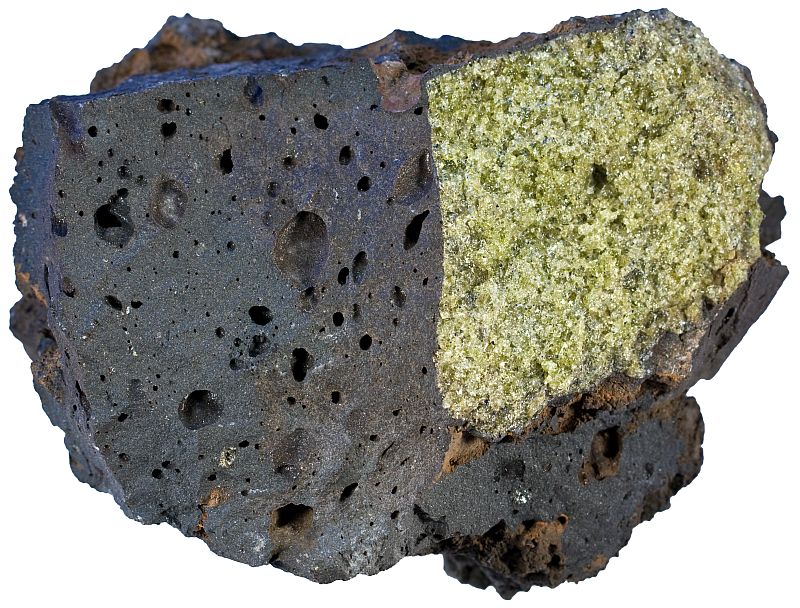Augite is a very common rock-forming mineral that gives black color to many igneous rocks. This mineral belongs to a group of silicate minerals known as pyroxenes. By the way, ‘pyroxene’ comes from the Greek language and means that these minerals have nothing to do with fire (i.e. igneous processes). This is, of course, especially unfortunate misnomer but the name has stuck and nowadays very few people associate it with its original meaning.
Augite is the most common mineral of this group. It is usually black because of significant iron content, but small crystals (in sand, for example) tend to be dark green. It is actually a member of a group of closely related minerals. There are continuous solid solutions between augite, diopside, and hedenbergite. The latter two occur mostly in metamorphic or ultramafic rocks, while augite is usual component of mafic igneous rocks. The chemical formula is usually expressed the following way: (Ca,Mg,Fe2+,Fe3+,Al)2(Si,Al)2O6 Augite contains less calcium but more aluminum, magnesium and iron than diopside-hedenbergite pair. These three minerals together are usually called calcic clinopyroxenes or Ca-rich clinopyroxenes. Clino- means that they are monoclinic (some pyroxenes are orthorhombic, they are called orthopyroxenes). These terms refer to the crystal systems which are defined based on the combinations of the elements of symmetry.
Augite occurs mostly in mafic igneous rocks (gabbro, basalt, andesite, pyroxenite, peridotite, etc.). It may also occur in metamorphic rocks (skarn, amphibolite, granulite) but in this case its composition is often fairly close to diopside. Its crystals are prismatic but not as slender as the crystals of another pyroxene aegirine which also is connected with augite chemically but doesn’t fit into the diagram below along with several other members of the pyroxene group.
